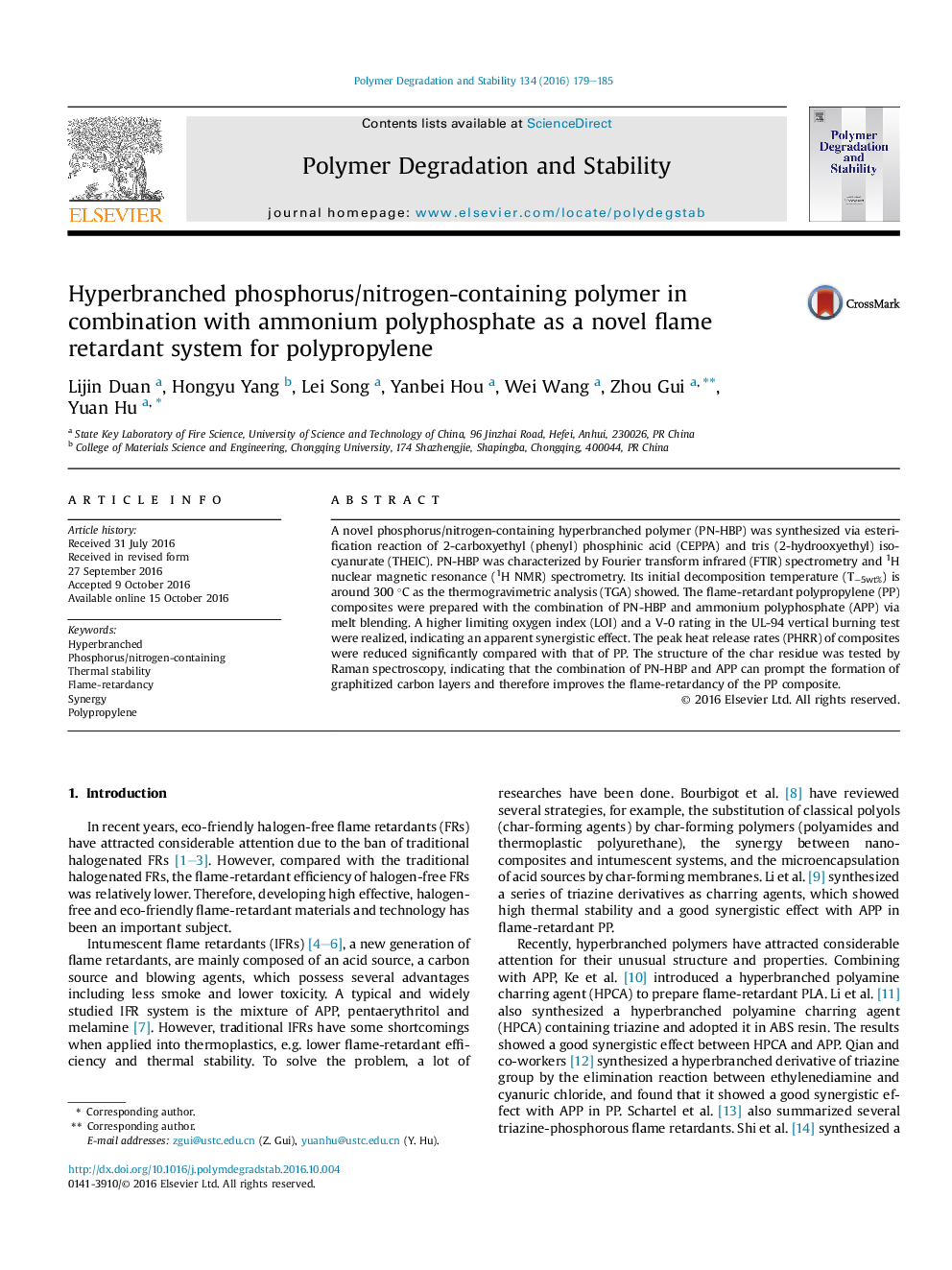| Article ID | Journal | Published Year | Pages | File Type |
|---|---|---|---|---|
| 5200895 | Polymer Degradation and Stability | 2016 | 7 Pages |
A novel phosphorus/nitrogen-containing hyperbranched polymer (PN-HBP) was synthesized via esterification reaction of 2-carboxyethyl (phenyl) phosphinic acid (CEPPA) and tris (2-hydrooxyethyl) isocyanurate (THEIC). PN-HBP was characterized by Fourier transform infrared (FTIR) spectrometry and 1H nuclear magnetic resonance (1H NMR) spectrometry. Its initial decomposition temperature (Tâ5wt%) is around 300 °C as the thermogravimetric analysis (TGA) showed. The flame-retardant polypropylene (PP) composites were prepared with the combination of PN-HBP and ammonium polyphosphate (APP) via melt blending. A higher limiting oxygen index (LOI) and a V-0 rating in the UL-94 vertical burning test were realized, indicating an apparent synergistic effect. The peak heat release rates (PHRR) of composites were reduced significantly compared with that of PP. The structure of the char residue was tested by Raman spectroscopy, indicating that the combination of PN-HBP and APP can prompt the formation of graphitized carbon layers and therefore improves the flame-retardancy of the PP composite.
